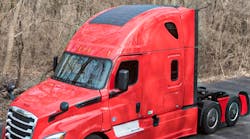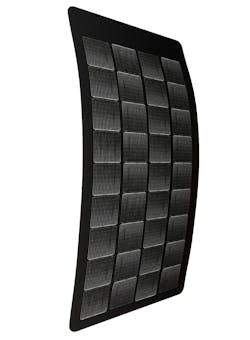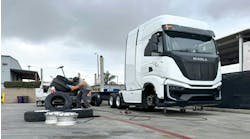Fleets increasingly are turning to alternative energy sources to help prolong battery life. According to the North American Council for Freight Efficiency (NACFE), interest in solar panels is growing because batteries often are no longer able to meet the power needs of today’s trucks. By maintaining batteries at a higher state of charge and extending the runtime of battery-powered HVAC and other systems, NACFE noted, solar panels can extend battery life.
NACFE also pointed out that the latest solar technology for trucks from a variety of manufacturers has progressed to include panels that are flexible, thin, easily installed, and reliable.
“It’s all about opportunity charging,” said Jimmy Fielding, sales applications engineer at Mission Critical Electronics (MCE), which offers the Xantrex and Purkeys brands of onboard AC power technology. “Anything you can do to keep a battery at or near 100% state of charge will greatly increase its life.”
A battery does not know where it starts out at as far as state of charge, Fielding explained further. If you cycle a battery at 50% state of charge, then your depth of discharge is going to be significantly higher than if you were to cycle that battery at 100% state of charge. It follows, therefore, that if you regularly cycle the battery at a lower depth of discharge it will have a higher life span while if you frequently discharge the battery to its maximum depth of discharge then you will significantly decrease the life of that battery.
For Fielding, solar is a great way to help keep batteries charged and to prolong battery life, and the panels provide green and free energy. Xantrex Solar Max Flex panels, for example, are available in different power levels and incorporate mesh grid-technology that allows them to be contoured to curved surfaces without impacting power output. In addition, the Max Flex panel can harvest up to 20% more energy during the day and in low light or shaded conditions.
The ROI for solar panels can be calculated in several ways, Fielding noted. “The first step is to understand the application and what a fleet is trying to gain, such as reduced fuel consumption, fewer road calls for battery failures, or lower maintenance costs. Some of those are hard costs such as fuel saved through increased MPG and reduced maintenance.
“Soft costs and savings are harder to put a dollar figure on, but we know they are there,” he added. “There’s improved driver retention, for example, and increased uptime from a reduction in maintenance, which means more time on the road hauling freight. Additionally, if a truck has high idle time, the engine is getting much more wear.”
Xantrex, MCE, and ZeroRPM have responded to that challenge as well with alternative power solutions designed to meet the demands of today’s trucks without sacrificing performance and reliability. Without the need for idling, the ZeroRPM system automatically shuts down the engine and provides a reliable onboard power supply utilizing high-density lithium-ion batteries. The batteries are charged from a 12V alternator and can also be integrated with solar panel and shore power charging systems.





